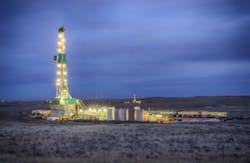Q: How has OPEC’s decision not to lower crude oil production targets impacted U.S. shale markets? Do you see OPEC’s manipulation of oil production impacting U.S. shale markets in the longer term?
A: The core areas of development in the major plays will continue to grow. However, at lower oil prices, additional capital to accelerate development will be more difficult to secure and many companies are dependent on this for continued development. Efforts to expand and test oil production outside the core area will generally stop, until costs come down far enough or oil prices rise to encourage further development. OPEC did not manipulate the market — they are competing in a global industry for market share just as Ford competes with Nissan or Boeing with Airbus. In the long term, U.S. shale markets could compete more directly with OPEC, as exports begin from North America into Asia, as this is OPEC’s key customer. At this point, U.S. production is still generally displacing domestic imports from West Africa, which in turn is now having to sell its crude in Asia. The emerging strong oil industry across Mexico, Canada and the U.S. is poised to challenge for global export market share.
Q: Some are comparing the U.S. shale boom to the dot-com boom and predicting a similar bust. Do you think this is a fair comparison and how much does OPEC’s recent decision play a role here?
A: The dot-com boom is not comparable to the shale boom. There is a tangible difference between producing and selling a commodity such as oil versus things like websites generating no revenue. Furthermore, the core of the industry is still functioning and projected to grow at $50 oil, where prices have stabilized. While it won’t grow as quickly, it is far from being a bust. OPEC isn’t relevant and they should not be expected to subsidize a foreign competitor. The ingenuity of the U.S. industry will continue to innovate and reduce costs, just as they have over the last 10 years. Wells that cost $12 million five years ago are now worth $6 million and could be valued at $3 million in another five years. This will continue driving market growth as long as people are using oil.
Q: If shale producers are cutting back, or will be in the near term, how does that impact investment in oil & gas technologies (pumps, flowmeters, valves, etc.)?
A: Across the board there will be a need to tighten costs, so margins on selling these items will shrink and companies will struggle, primarily those servicing smaller companies or those operating on the fringes. Investment will be focused on improving the efficiency of these technologies so that they are competitive.
Q: Looking ahead five to 10 years, do you see OPEC’s influence diminishing, staying the same, or growing?
A: OPEC is likely to continue along the same trend of having a diminishing influence over the next 10 years. Production growth outside OPEC will continue to challenge the group, as well as the individual objections to policies from countries within the group.
Q: Looking ahead five to 10 years, where do you see the U.S. shale industry compared to today?
A: The U.S. shale industry has just gone through a massive growth phase. In 10 years, the industry will be in a more mature state and growth expectations will not be nearly as high, with production levels likely stabilized.
Questions by Amy W. Richardson, managing editor of Flow Control magazine and FlowControlNetwork.com. Amy can be reached at [email protected].
www.globaldata.com



